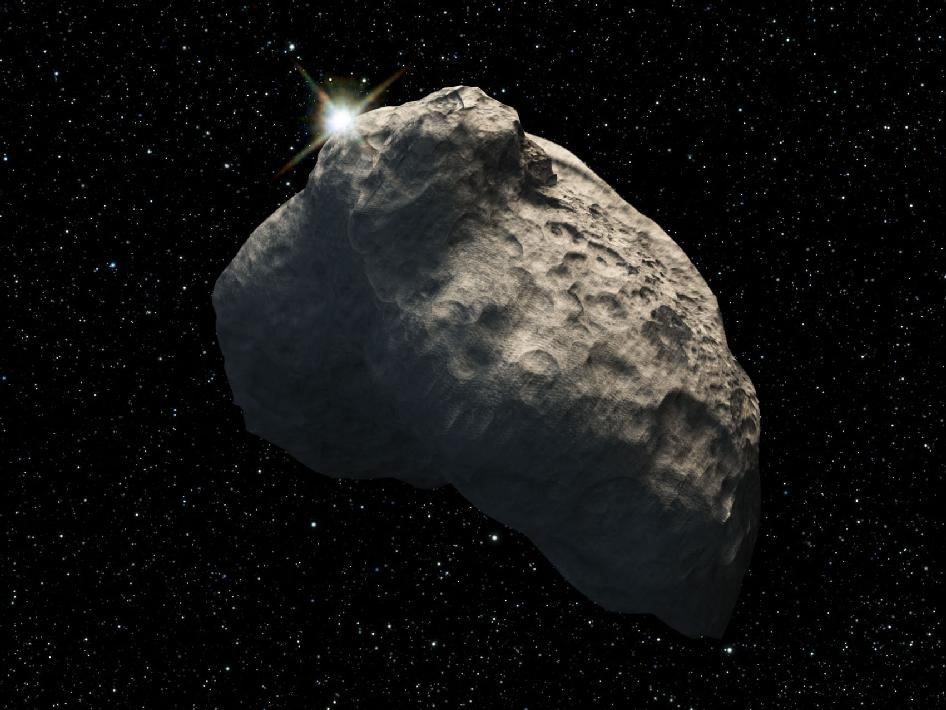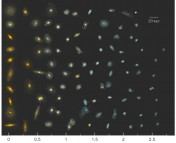- Paper Title: Detection Technique for Artificially-Illuminated Objects in the Outer Solar System and Beyond
- Authors: Abraham Loeb & Edwin L. Turner
- 1st Author’s Primary Institution: Astronomy Department, Harvard University
Today’s astrobite features some serious out-of-the-box thinking, and is a fun example of two astronomers asking the question: what progress can we make in the search for extra-terrestrial civilizations with current telescope and survey capabilities? The authors’ premise is that, as on Earth, intelligent civilizations that developed on other worlds would likely take advantage of the natural light provided by their sun. Then, once they had sufficient technology, they might want to artificially illuminate their surroundings at night. So, with current telescopes and surveys, could we detect the signatures of this artificial light on objects in the outer solar system (or beyond)? In this paper, the authors show that indeed we should be able to.
The most natural place to start the search for artificially illuminated objects is in our own Solar System. Specifically, the authors suggest investigating Kuiper belt objects (KBOs), which are a collection of large (> 1000 km) to small (> 10 km) bodies at the edge of the Solar System, roughly 30 – 50 AU from the Sun. (An AU, or astronomical unit, is the distance from the Earth to the Sun.) Thanks to existing surveys, we already know of about 1000 KBOs, and that number is expected to increase by 1 to 2 orders of magnitude in the coming decade thanks to new wide-area surveys like Pan-STARRS and LSST coming online.
To determine whether we would be able to detect an artificially-illuminated object in the Kuiper belt, the authors perform the following quick calculation. First, they note that for an object at a large distance (>> 1 AU) the observed flux from sunlight scattering off an object scales as D^-4, where D is that object’s distance from the Sun. Albedo, A, is a measure of the reflectivity of an object. If an object is moderately reflective, A = 7%, and at a distance of 50 AU, we can detect it if it is about 1000 km in diameter. So how does this compare to our ability to see artificially-illuminated objects? Because the flux from an artificially-illuminated object scales as D^-2, if an object were artificially illuminated at a level of 1% of the brightness of daylight on Earth (about as bright as a brightly-lit office), at this same distance, we would be able to see it even if it were 19 times smaller (53 km). This minimum size, the authors note, is about the size of a major terrestrial city. In other words, we could use existing telescopes to see a reasonably-sized artificially-lit area on a KBO at the edge of our solar system!
So having proven that we could detect the flux from such a region, the authors then ask, how do we know it is artificial illumination, and not reflected sunlight? The answer lies in the relationship between flux and distance. The slope of this relationship, α, can be described as α ≡ (d log F/d log D). For a sunlight-reflecting object, α = -4, but for an artificially-lit object, α = -2. So by carefully monitoring the variations in flux of KBOs (something the upcoming surveys are already equipped to do), we should be able to detect signatures of artificial light. Then, with followup spectra from 8- or 10-meter class telescopes, we could look for signatures of various types of artificial light, like incandescent or light emitting diodes (LEDs). With the next generation of telescopes, we should even be able to perform this analysis for objects in other solar systems.
While it is true that this idea may seem a little far-fetched (would civilizations that developed at the edge of a solar system evolve to need light?), it is nevertheless one of those interesting and almost philosophical topics that astrophysicists get to spend some of their time thinking about. And who doesn’t want to spend a little time imagining a giant extra-terrestrial city at the edge of the solar system?






My favorite quote from this paper:
A more hypothetical origin for artificially-lit KBOs involves objects composed of rock and water/ice (asteroids or low-mass planets) that were originally in the habitable zone of the Sun, developed intelligent life, and were later ejected through gravitational scattering with other planets (such as the Earth or Jupiter) into highly eccentric orbits.
+1 for wacky speculation.